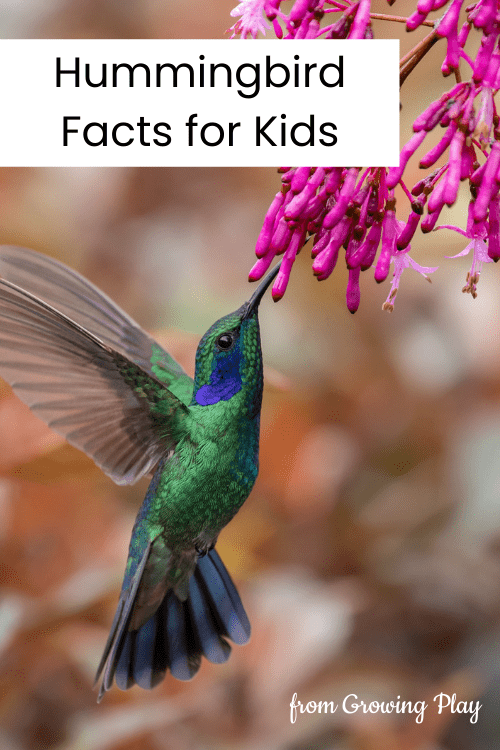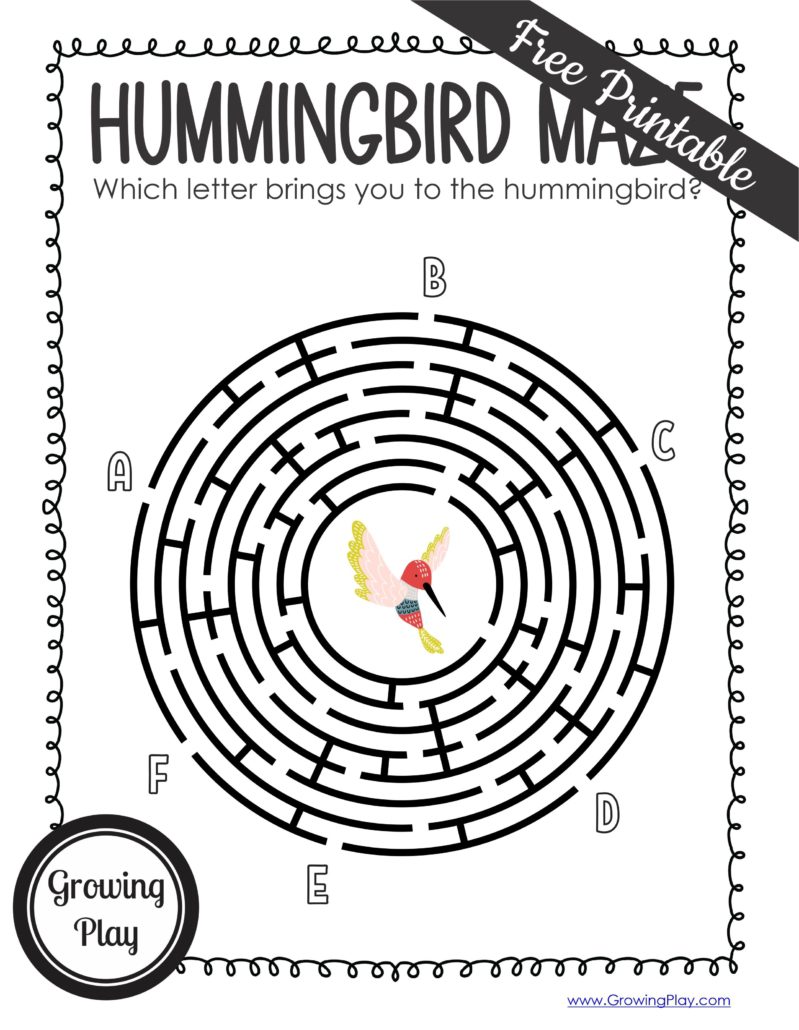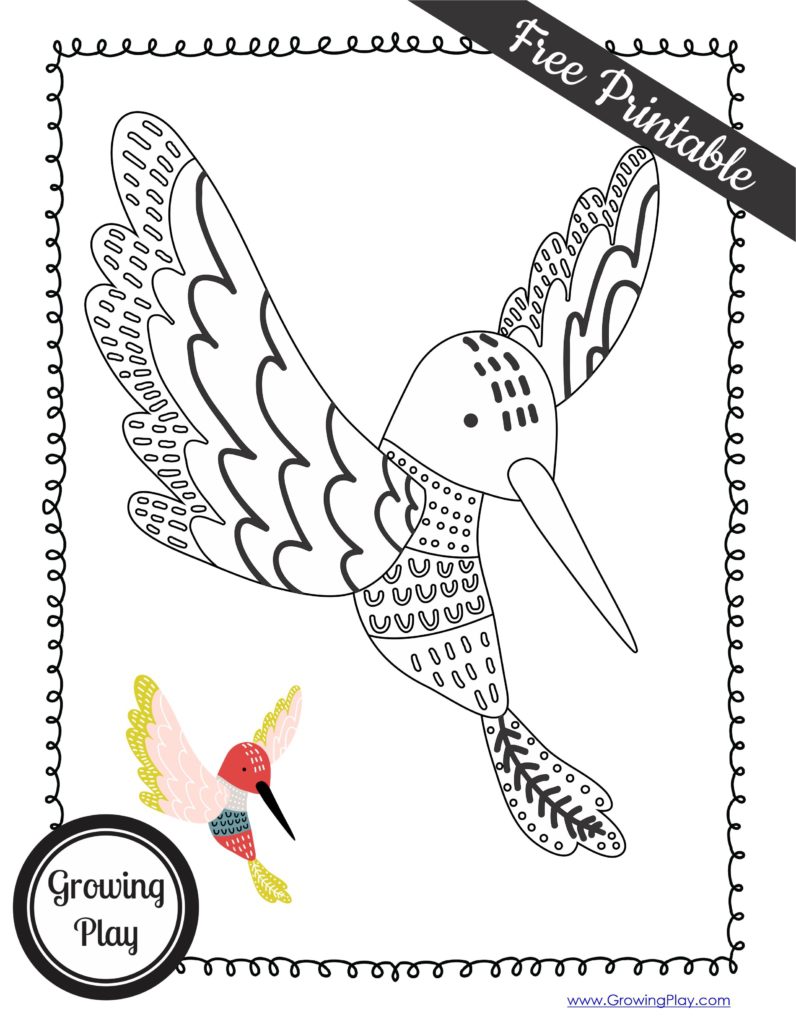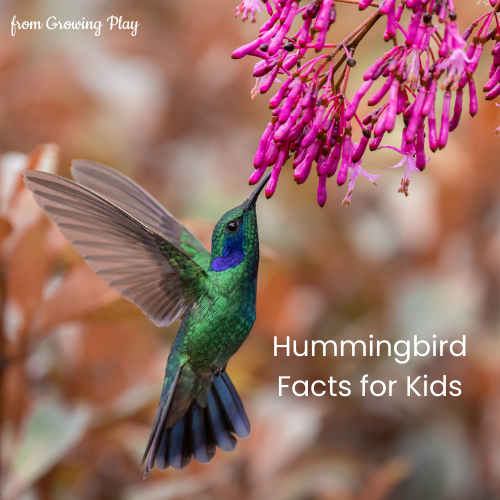Hummingbird Facts for Kids

Have you ever seen a hummingbird? Hummingbirds are small birds that flutter around searching for the nectar of flowers. They are the smallest living bird species in the World and are commonly found in Central America, specifically along the Gulf of Mexico. They can travel long distances and the best part is, you always know they are coming because of their distinct humming sound. What else do you want to know about hummingbirds? Keep reading Hummingbird Facts for Kids to find out. BONUS: Download two FREE Hummingbird printables at the bottom of the blog post – a coloring page and a fun maze!
Hummingbird Size
Hummingbirds are the world’s smallest birds, measuring just a few inches in length on average. Small hummingbirds can be just a couple of centimeters long.
The smallest hummingbird is the CM Bee Hummingbird, which is about the size of your fingertip. That’s one small bird!
Characteristics of Hummingbirds
Despite their small size, hummingbirds have a powerful sense of smell and hearing, allowing them to detect predators like hawks and snakes from a great distance.
They may seem delicate, but hummingbirds possess strong feet and legs that help them perch easily on branches and flower stalks as they rest or hunt for food.
To keep warm on a cold night, hummingbirds often huddle together or tuck their long tails around themselves for added insulation.
When hummingbirds aren’t busy feeding or migrating, they can often be seen taking dust baths in order to clean their feathers and remove parasites.

Hummingbird Facts for Kids – Hummingbird Diets
Hummingbirds have a long bill and a skinny beak that they use to drink flower nectar and feed on tiny insects.
They feed primarily on nectar by hovering over flowers and using their long tongues to lap up this sweet treat.
In addition to hummingbird-specific plants that produce lots of nectar, they will also eat small insects like flies and mosquitoes, which they often catch mid-flight.
Hummingbirds in Flight
Unlike many other bird species, hummingbirds can fly both forward and backward with equal ease.
Despite their size, hummingbirds can fly at speeds up to 55 miles per hour! That’s faster than most cars!
Hummingbird wings beat at an incredible rate of 50 times per second, allowing them to hover, climb and dive effortlessly as they pursue their next meal or seek out their next flowery nectar source. In fact, their wings move so fast that it looks like they don’t even have wings!
Hummingbird Facts for Kids – Where in the World are the Hummingbirds
Hummingbirds are native to North and South America, with the majority of species living in tropical areas, such as the Gulf of Mexico.
If you live in Florida or have ever visited the state, chances are you have seen a hummingbird. That’s because hummingbirds don’t like the cold weather, so they travel great distances to find the sun. This characterizes hummingbirds as migratory birds. Do you know any other migratory bird species?

The Different Species of Hummingbirds
Some hummingbird species are more territorial than others, with male hummingbirds often engaging in aerial chases and fights in order to protect food sources and potential mates.
Ruby-Throated Hummingbirds are the only hummingbird species that breed in the eastern United States, making it a popular choice for birders and backyard gardeners alike.
The Rufous Hummingbird is known for its exceptional flying skills. This species can travel up to 2,000 miles at a time! That’s about the distance from the tip of Maine to the bottom of Florida.
The Broad-Tailed Hummingbird is one of the most common species of hummingbird in the western United States, and its distinctive call is often used as an identifier by birders.
Anna’s Hummingbirds are the only hummingbird species that are found year-round in the state of California, making it a popular choice for bird watchers in the Golden State.
The Black-Chinned Hummingbird is one of the most widespread hummingbird species in North America and can be found in all different types of habitats, ranging from deserts to mountains to forests.
The Hummingbird Nest
Some species of hummingbird build nests out of spider webs and other materials, while others simply line their nests with downy feathers.
Although hummingbirds typically lay two eggs per clutch, only around 30% of hummingbird chicks survive to adulthood due to predation and other dangers.
Female hummingbirds are solely responsible for incubating the hummingbird eggs and raising the young, as males take no part in nesting or childcare.
Hummingbird Facts for Kids – Hummingbird Groups
Unlike many other bird species, hummingbirds are not social creatures and generally prefer to live alone except during mating season.
While hummingbirds are not known to migrate in large flocks like other birds, they will often travel in small groups or pairs during their annual migration journeys.
Hummingbird Lifespans
Despite their diminutive size, hummingbirds have incredibly strong immune systems, allowing them to live long lives – some species can reach ages of 15 or 20 years!
Hummingbird Facts for Kids – Gardening and Attracting Hummingbirds
Hummingbirds are known for being able to fly at very low temperatures, making them a popular choice for gardeners looking to bring more wildlife into their yards.
Hummingbirds have evolved to be highly sensitive to the colors red and ultraviolet, which help them easily identify flowers in their habitat. So, the next time you are planting a garden make sure to use flowers of many colors, specifically red and purple.
In addition to hummingbird feeders that provide sugar water as a substitute for nectar, many gardeners also plant flowering plants like bee balm and butterfly bush that hummingbirds love to attract more birds to their garden.
Be careful, though, while hummingbirds are an important part of many ecosystems, they can also be a huge nuisance for farmers. These tiny birds are known to damage crops by feeding on the flowers and fruits that grow there.
Would you Want a Hummingbird?
So, would ever want a hummingbird to come visit you? These beautiful birds are surely busy, but if you leave a bird feeder out, I’m sure they can find the time to stop by!

WANT MORE FUN FACTS FOR KIDS?
Check out these fun facts for kids here and browse all the other topics at the bottom of the post.
DOWNLOAD YOUR FREE HUMMINGBIRD PRINTABLE PACKET HERE
Sign up to receive the Growing Play email newsletter to get access to the Hummingbird worksheets. If you already subscribe, you can enter your email too! You won’t be subscribed twice.


